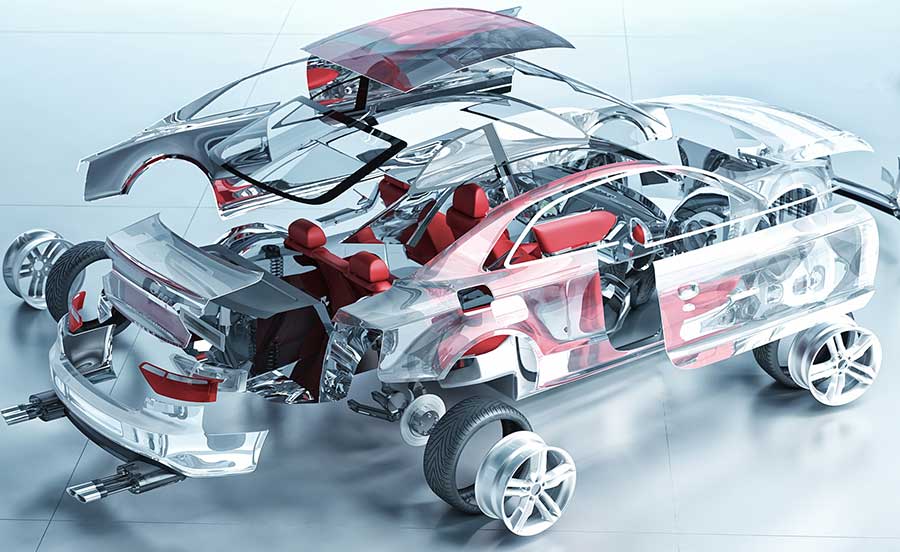With the rapid development of automotive electronics technology, PCBA processing is more and more widely used in the automotive industry. In-vehicle control system, infotainment system, automatic driving assistance system and other core functions rely on high-performance PCBA. however, due to the high reliability and safety requirements of automotive electronics, the role of PCBA testing in automotive electronics is crucial. In this paper, we will discuss the application of PCBA testing in automotive electronics and key testing methods.

1、Automotive electronics on the PCBA test requirements
Automotive electronics is a complex environment, harsh working conditions, PCBA needs to withstand high temperatures, vibration, electromagnetic interference and other extreme working conditions for a long time. Therefore, PCBA testing must meet the following requirements:
High reliability: to ensure that the circuit board in a variety of extreme environments and stable operation, to avoid failure.
Safety assurance: PCBA directly affects the car’s braking, steering and other critical systems, the test must comply with automotive industry standards, such as ISO 26262.
Durability verification: Long-term stability testing is required to ensure that the PCBA keeps working properly during the automotive life cycle.
2、Key applications of PCBA testing in automotive electronics
2.1 Power Control System Testing
Power control systems (e.g., engine control unit ECU, battery management system BMS) are the core components of automotive electronics, and PCBA plays a crucial role in these systems. Testing mainly includes:
Function test: to ensure that the PCBA can correctly control the engine, transmission, battery charging and discharging.
Temperature and environmental testing: simulate high engine temperatures, humidity, and vibration environments to verify the durability of the PCBA.
Electromagnetic compatibility (EMC) test: prevent PCBA from failing due to electromagnetic interference and ensure stable signal transmission.
2.2 In-vehicle infotainment system test
Modern cars are equipped with complex infotainment systems, including the centre control screen, car navigation, audio system, etc.. The PCBA test of these systems mainly involves:
Audio and video signal test: to ensure that the audio and display signal transmission is stable and free from interference.
Interface test: Stability test of USB, Bluetooth, Wi-Fi and other connection functions.
User interaction test: test the response speed and accuracy of the touch screen, voice control and other functions.
2.3 Automatic driving and ADAS system test
Advanced Driver Assistance System (ADAS) and automatic driving system involves multiple PCBA control modules, such as camera, millimetre wave radar, LiDAR, etc.. Key tests include:
Signal processing test: verifying the PCBA’s ability to process sensor data such as camera and radar.
Data communication test: Ensure that the PCBA transmits data error-free in the in-vehicle LAN (CAN, LIN, FlexRay).
Extreme environment test: test the working performance of PCBA in low temperature, high temperature, rain and fog and other complex working conditions.
2.4 Telematics System Test
Intelligent connected cars need to achieve data interaction through 5G, V2X (vehicle-to-vehicle/infrastructure communication) and other technologies, and the focus of PCBA testing includes:
Wireless communication test: verify Wi-Fi, cellular network (4G/5G), V2X signal stability.
Data encryption and security testing: Ensure PCBA communication security to prevent hacker attacks.
Remote diagnosis and OTA upgrade test: Test PCBA’s ability to support remote troubleshooting and software update.
3、Automotive electronics PCBA test methods
3.1 In-Circuit Testing (ICT)
In-Circuit Test (ICT) detects the welding quality, resistance, capacitance, inductance and other parameters on PCBA through probes, which is suitable for automated testing of mass production.
3.2 Functional Test (FCT)
Functional Test (FCT) simulates the actual working environment of the PCBA to verify the functional performance of the board in the automotive system, such as control signal input and output, current consumption, power management and so on.
3.3 Highly Accelerated Life Test (HALT)
HALT testing simulates the long-term usage environment of PCBAs through extreme temperature, humidity, vibration, etc. to identify potential reliability issues.
3.4 X-ray Inspection (AXI)
AXI (Automated X-ray Inspection) is mainly used to inspect the soldering quality of BGA, QFN and other package components to avoid defects such as false soldering and air bubbles from affecting the reliability of automotive electronics.
Conclusion
PCBA processing is more and more widely used in the automotive electronics industry, and PCBA testing is crucial as a key link to ensure product quality and safety. From power control, autonomous driving to in-vehicle infotainment system, PCBAs of different functional modules need to be strictly tested to meet the requirements of high reliability and safety. With the development of intelligent connected cars, PCBA testing technology will be continuously upgraded to provide more efficient and intelligent quality assurance for the automotive electronics industry.


